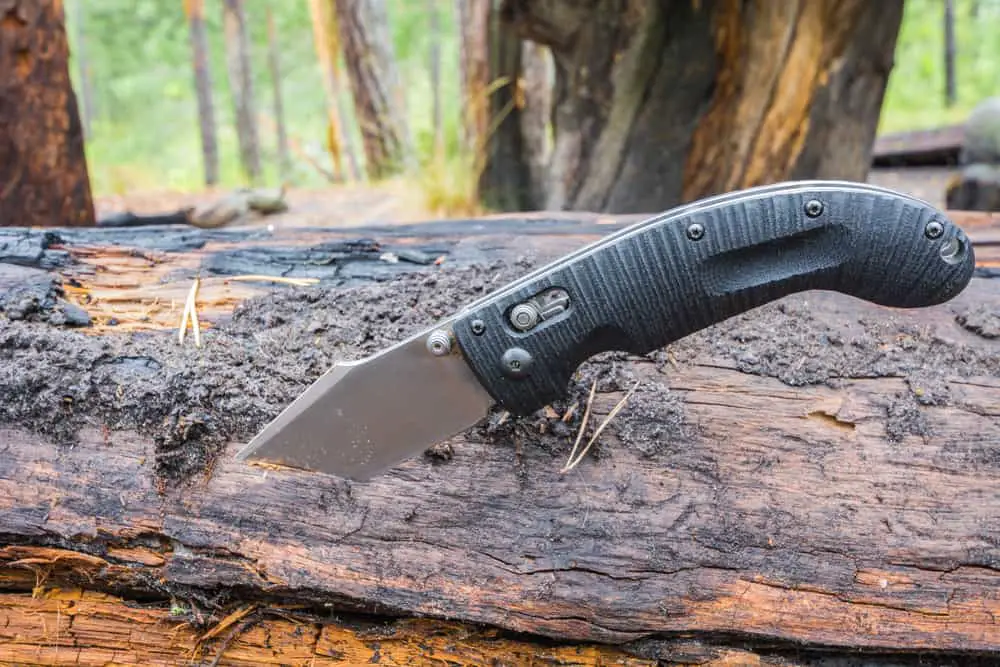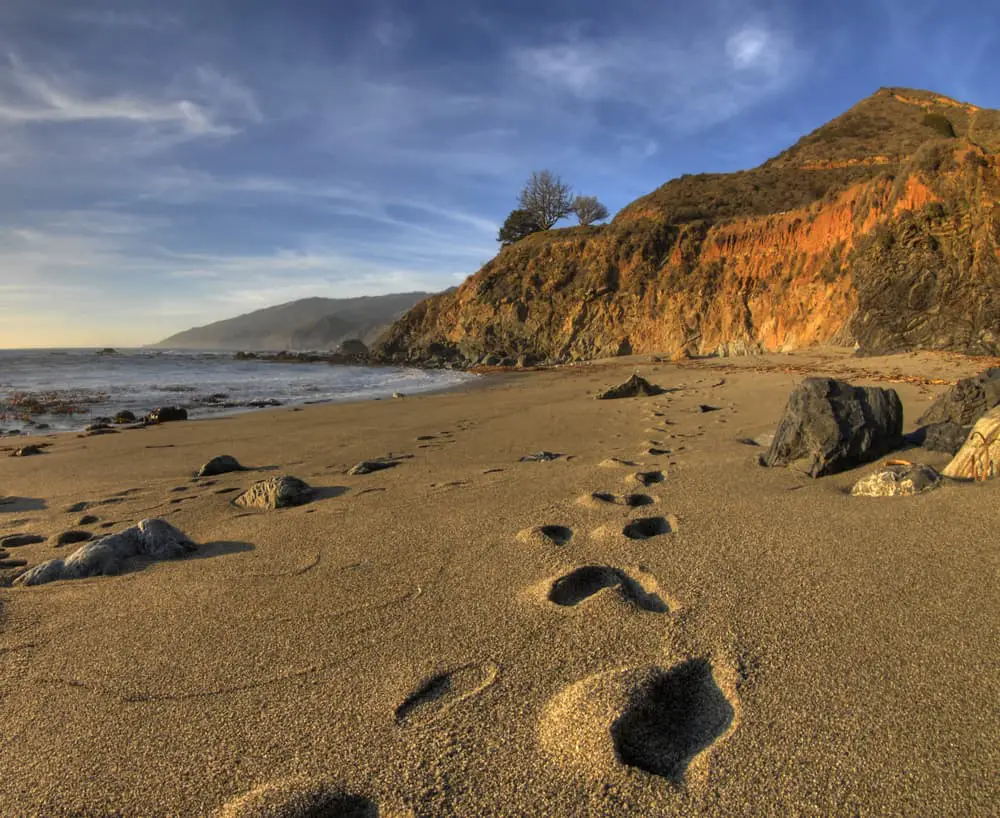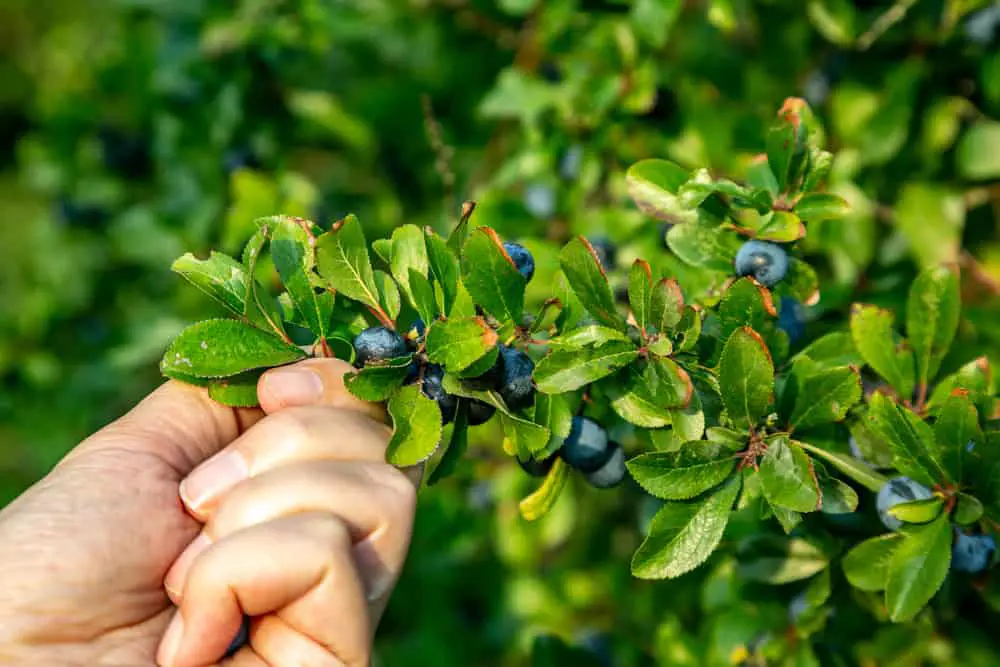Surviving in the natural wilderness is a crucial skill to develop. This is referred to as Bushcraft. Bushcraft includes both the use of skills and knowledge to survive. In this article, I cover the major things you need to know for proper bushcrafting.
Make sure to check out how to build of a bushcraft survival kit.
SKIP AHEAD
1. The Blade

The Cutting blade, the most important tool for the Bushcrafter. It is as important as the sword is to a warrior or teeth and claws are to the Lion. A good Bushcraft blade is sturdy and light and is made from the highest quality materials with the tang running the full length of the knife. With appropriate use, the Bushcrafter can use this blade to stab or cut to give or take life.
A Survival Knife and a Bushcraft knife have a lot of the same similarities.
2. Firecraft

The ability to make fire under almost any condition is an essential part of Bushcraft survival. With Firecraft there are many techniques to building a fire; a fire drill, smoldering plants and trees, sunlight, striking rock that contains iron such as flint, and of course matches and lighters.
Firecraft in the ability to create, control, and use fire to aid in one’s survival. Another critical skill in Bushcraft is the ability to transport fire, usually by carrying burning coal around in some type of dry sage grass to keep it smoldering.
Click on the following links for few things you need to know about building a fire:
3. Knots / Ropecraft
The ability to join two or more pieces of natural or man-made material is a vital skill to have for Bushcraft survival. By joining two or more pieces together, you not only increase the strength of the material but also the usability as shelter, a raft, a weapon or a sled.
4. Hunting and Trapping
In Bushcraft, hunting and trapping is the pursuit of animals and fish for food. Mastery of many elements in Bushcraft including tracking and rope craft lead to the ability to hunt for food by use of traps, nets and snares or weapons that stab and cut.
5. Shelter
The shelter is an important aspect of every outdoor venture. Your first layer of shelter is the clothing on your back, this provides you just enough to stay warm and dry for short periods of time. Your second layer of shelter is a stationary structure whether it is a small tent or a full-blown log cabin.
Knowing how to make shelter for you and your family is an important skill in Bushcraft.
6. Tracking

Tracking animals and humans is an important part of Bushcraft survival. Tracks made by humans and animals on the ground, when read correctly, show a pattern of the habits of the animal or human.
Once you establish this pattern, you will have the ability to continuously and carefully observe the animal’s movements and patterns. It is important to recognize that animals you find in the forest are as much creatures of habit as human beings. A particular animal you are stalking will follow the same path to and from water each day or to and from a food source.
It will hunt and forage in the same area and only leave when it is driven out by an outside force, predator, fire, flood, or drought. This pattern forming characteristic of all animals makes it possible for the experienced bushcrafter to predict the animal’s movements, and so he selects the sites for his traps, snares, or ambush.
7. Foraging

Have you ever looked at a wild plant or bush, and wondered if you could eat it? For the Bushcrafter, foraging is a very important element to survival. All hunters and fishermen know that if it was easy, they would not call it hunting and fishing, they would call it catching.
Being able to identify and eat plants without getting sick can make the difference between surviving and not surviving.
Common Questions about Bushcraft
What is the best knife for bushcraft?
The key to a great bushcraft knife is in its versatility. It also needs to be reliable, as its uses are many. These sorts of knives have to be capable of going from batoning wood to carving feather sticks and skinning carcasses in the blink of an eye.
There are many great knives available nowadays. The key features to look out for are a full tang, quality steel (stainless is tougher, high carbon steel can be made sharper), and something relatively lightweight.
It should have a comfortable, secure grip. A scandi-grind will make sharpening easier, and some knives include a rough-ground spine to allow it to function as a firestarter. Most good knives also come with a quality sheath to prevent it from accidentally finding its way into your leg.
Some good examples of excellent bushcraft knife brands would be Fallkniven, Morakniv, or KA-Bar. Some of their best-regarded products are Fallkniven’s F1, Morakniv’s Bushcraft Carbon, or KA-Bar’s famous BK2.
Can I carry a bushcraft knife?
This depends on where you are, as the laws on this vary from state to state and country to country. As bushcraft knives are typically fixed blade knives, you’ll need to make sure carrying a fixed blade knife is permitted in the particular state you plan to carry it in.
Another thing to be aware of is the length of your knife. While some states don’t specify a particular permitted length, others do.
For example, in California, the allowable length of a fixed knife blade is only 2.5” while carried. They must also be open-carried in a sheath at your waist. Whereas in Alabama, knife laws are more relaxed and there is no fixed blade length limit.
The key thing is to make absolutely sure that you’re carrying your knife legally, wherever you intend to use it, or the only thing getting cut short will be your camping trip.
How do you tie a bushcraft knot?
One of the easiest and most useful bushcraft knots is the square knot or reef knot.
There are stronger knots, but the reef is great for connecting cords quickly and is fairly neat. Don’t use it on heavy loads, however.
To tie the knot follow these steps;
1) Hold the working end in your right hand and the standing end in your left hand, with both facing up.
2) Pass the working end over the standing end. Then tuck it beneath and bring it back up again. Both ends should now be opposite where they started.
3) Take the working end and pass it over the top of the standing end again, tucking it beneath, then bringing it back up.
4) Pull both ends together to complete the knot.
There’s a common saying to remember – ‘right over left; left over right, makes a knot both tidy and tight.’
If you end up with a granny knot you’ve made a mistake somewhere!
What are the 8 basic knots in scouting?
The 8 basic knots in scouting are;
- The Sheet Bend or Double Sheet Bend Knot – Useful for tying two ropes together.
- The Bowline Knot – This is a popular knot for mountaineering, as it is a non-slip knot and won’t budge even under great strain.
- The Clove Hitch – This is a versatile knot that can be used to start or finish most lashings.
- The Square Knot – Also known as the reef knot, this can be used to connect two ropes, however, it isn’t very strong.
- Two Half-Hitches – Commonly used to tie a rope to a trunk or log.
- The Truckers Hitch – This can be used as a strong pulley that is able to be locked off. Useful for hanging things, securing equipment
- The Taut-Line Hitch – This creates a loop that can be useful for securing tent stakes.
- Double Fisherman’s Knot – Useful for tying together two ends of the same cord.
What is the strongest knot?
The strongest knot is something of a difficult question to answer, as it often depends on what you want to use the knot for. The best answer to ‘what is the strongest knot?’ would technically be, whatever knot is best suited to the required task.
However, in its simplest terms, a strong knot can also mean a knot that can take an incredible amount of strain or pressure. In this regard, there are two main contenders.
First is the figure-eight knot, one that climbers bet their lives on every time they use it. The beauty of this knot is its pure brute strength and the ability to make it stronger by making it a figure-eight follow-through.
The second contender for the strongest knot might well be the humble bowline knot. Capable of holding thousands of pounds of pressure, it is easier to undo than the figure eight and is highly versatile and dependable.
What is the weakest knot?
While a weak knot may not be a very proud or flashy piece of knowledge it can still be invaluable as something that is quick and simple.
In this regard, the clove hitch may be one of the weakest knots in terms of the strain it can withstand. Typically it can take somewhere around 60 to 65 percent of the strength of the rope, however, this isn’t a set number.
Despite this weakness, it is still a very practical knot when used in the right scenario. It is also important to note that modern cord and rope are so strong that even a so-called ‘weak’ knot is still capable of holding a surprising amount of strain.
Another important thing to remember is that knots themselves create weakness, regardless of the knot you use. Whenever ropes do break, they tend to break wherever they are knotted first, which is something to keep in mind.
Are leg hold traps illegal?
The legality of leg-hold traps throughout the world is an ongoing debate. Animal rights activists are continually trying to raise awareness and campaign for the regulation or outright banning of leg-hold traps all over the world.
Indeed, in Europe, these devices are totally banned, and even importing fur caught using these devices is illegal.
However, in the US, things are more complex, depending on where you are. This is because trapping is largely regulated at the state level, meaning that the rules will vary depending on where you are in the country.
In New Jersey, for example, there is an outright ban on the manufacture, sale, possession, transport, and use of steel leg hold traps.
However in some states, there are little to no rules, and trappers aren’t even required to check their traps within a mandated time frame. As always, make sure to check this carefully so you aren’t the one getting clamped in irons.
Are snare traps illegal?
Snare traps are another form of trapping that, similar to leg hold traps, have prompted heavy criticism and controversy, as they are considered inhumane by animal rights activists.
Another issue with these traps is that they sometimes snare unwanted or untargeted animals, which has also drawn criticism from activists who dispute the usefulness of these traps.
In terms of legality, however, this is another issue that is specific to the particular state you intend to trap in. Similar to leg-hold traps, there are various regulations from state to state. For example, in Arkansas, you need a license to hunt or trap.
Certain snares, such as leg snares are illegal while other types of snare are not. Always check with your state’s wildlife department to be absolutely sure.
What is a deadfall trap?
A deadfall trap is a sort of trap that uses a heavy object, such as a rock or large log, to trap or kill prey.
Typically, these traps are tilted up at an angle and held in place by branches, with one branch acting as the trigger. When an animal sets off the trigger the rock or log falls and crushes the animal.
They can be used to catch many different types of game and may be used with or without bait.
Some of the most common and useful deadfall traps are the figure-four deadfall, the split stick deadfall, and the Paiute deadfall. These traps have been used by various cultures for many thousands of years, but as above, if you plan on trapping, always make sure you are abiding by the particular laws of your state or local authority.
Is foraging bad for the environment?
To live off the land is one of the most basic and essential elements of human culture and civilization. This is easy to forget when most people are so far removed from the process of finding their food.
But can foraging put a strain on the environment? Some nature groups claim this to be the case, however, the truth isn’t entirely clear. A 2006 study carried out in Switzerland called, ‘Mushroom picking does not impair future harvests – results of a long-term study in Switzerland’ suggests the contrary.
But despite the catchy and convincing title of such studies, not everyone is convinced.
The truth, as with most things, probably lies somewhere in the middle. As long as it is done sustainably and without overexploitation, foraging can be a great way to supplement your diet even outside of survival situations.
However, in emergencies, foraging is essential and definitely worth having a sound understanding of.
Where is it legal to forage?
This is another question that doesn’t have a simple answer. Foraging is bound by regulations and laws that change from state to state like trapping laws, however foraging rules can also be different from park to park and even season to season. So, you see how difficult it is to give a straight answer.
As you’ve probably guessed, your best to check this information based on where you plan to forage, so consider getting in touch with your local wildlife authority or park ranger.
As a general rule however it is usually forbidden to collect wood or plants in places like national parks. However the enforcement of this is usually delegated to a particular park superintendent, so make sure to check this. If you’re lucky enough to have your own land, however, things get quite a bit simpler.
Can you pick berries in a national park?
While national parks are some of the most beautiful and biodiverse areas of the country, they are actually subject to very strict rules regarding any kind of foraging. This is obviously to make sure that these precious ecosystems remain as strong and healthy as possible into an uncertain future.
Unfortunately, this doesn’t bode well for would-be gatherers hoping to score big in these protected areas. The standing rule regarding foraging in national parks is that it’s totally forbidden. You may not leave the park with rocks, plants, fossils, or anything else except that which you took inside with you. You aren’t even permitted to chop wood or pick up shed antlers.
However, there are some exceptions, granted to very specific groups such as members of certain Native American tribes for example. It’s also possible for particular parks to relax these rules or allow exceptions, as the responsibility for enforcing these rules lies with the authorities running the particular park.
Bushcraft Gear Guides
Make sure to check out our guides on gear for bushcrafting:

